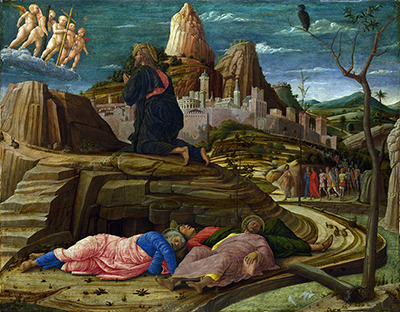Andrea Mantegna played an important role within the Venetian School and his life has been examined in great detail in order to uncover all of the works that derived from his highly successful career.
In order to better understand the man himself, we have collected different quotes and opinions around his life here.
This was an artist who would have studied historical art in great detail, and we would see its influence within his work. He was therefore highly intelligent and well studied. In working in a way that was a little different to how other Italians were working at that time also suggests a strength of character in order to push new boundaries, particularly in how perspective was being used within art.
This would leave a legacy that later members of the Italian Renaissance would learn from. Whilst discussing artists from the 14th and 15th century, it is perhaps inevitable that information on their lives is not available in an abundance, and there was also a lack of art biographers back then. Giorgio Vasari was certainly the best known of them, and his publications did allow us to learn more about Mantegna, the man, though with little other information available as a means to confirming his views which sometimes have been challenged.
The artist would lead an important studio which allowed his legacy to be strengthened, even living on past his death through the work of his apprentices. This did however also increase the confusion around attribution that existed on some of his paintings and engravings, which is unlikely to ever be completed solved. This situation is entirely normal for this period of art, where little documentation was made and anything that was produced is likely to have been lost or damaged in the many centuries that have passed since.
One must therefore accept that the information we have around Mantegna, including around his personality and family life, is likely to be all that we will ever have, and we must just make the best of it. Each artwork from his career is now clear in its explanation of attribution and scientific research has at least allowed us to be a little more precise in recent generations.
Famous Quotes by Andrea Mantegna
Sadly, there are currently no quotes available from the artist.
Quotes about Andrea Mantegna by Art Historians and Fellow Artists
Giorgio Vasari eulogizes Mantegna, although pointing out his litigious character. He had been fond of his fellow pupils in Padua: and with two of them, Dario da Trevigi and Marco Zoppo, he retained steady friendships. Mantegna became very expensive in his habits, fell at times into financial difficulties, and had to press his valid claims for payment upon the attention of the Marchese.
Wikipedia
Mantegna's main legacy in considered the introduction of spatial illusionism, both in frescoes and in sacra conversazione paintings: his tradition of ceiling decoration was followed for almost three centuries. Starting from the faint cupola of the Camera degli Sposi, Correggio built on the research of his master and collaborator into perspective constructions, eventually producing a masterwork like the dome of Cathedral of Parma.
Wikipedia
Mantegna's enthusiasm for the classical style provided a framework for generations of later Italian Renaissance artists. The use of allusions to the style and themes of Classical Art became a prominent feature of other artists' work, and the idealized standard of beauty which he favored became dominant in painting and sculpture of the next 100 years. Leonardo da Vinci drew on Mantegna's realistic approach in his paintings, while the German painter and engraver Albrecht Dürer, a key figure in the Northern Renaissance, was also influenced by Mantegna's advances in naturalistic representation.
TheArtStory.org
Perhaps of even greater significance were his achievements in the field of fresco painting. Mantegna’s invention of total spatial illusionism by the manipulation of perspective and foreshortening began a tradition of ceiling decoration that was followed for three centuries. Mantegna’s portraits of the Gonzaga family in their palace at Mantua (1474) glorified living subjects by conferring upon them the over-life-size stature, sculptural volume, and studied gravity of movement and gesture normally reserved for saints and heroes of myth and history.
Britannica.com/
Mantegna also created a number of Engravings, which the biographer Giorgio Vasari attributed to him; though the artist never signed or dated the works. His masterful collection of works are seen in the Uffizi Gallery in Florence, The Louvre in Paris, The Dresden Gallery, The National Gallery of Art in Washington D.C. and in Museums, galleries and historic places throughout Berlin, Copenhagen, London, Milan, Madrid, Venice and Verona.
VirtualUffizi.com
Andrea Mantegna was an Italian painter, a student of Roman archeology, and son-in-law of Jacopo Bellini. Like other artists of the time, Mantegna experimented with perspective, e.g. by lowering the horizon in order to create a sense of greater monumentality. His flinty, metallic landscapes and somewhat stony figures give evidence of a fundamentally sculptural approach to painting. He also led a workshop that was the leading producer of prints in Venice before 1500.
Google Arts and Culture




